How to Clean and Maintain a Grease Trap
How to Clean and Maintain a Grease Trap
You pump out your grease trap, but sometimes, that’s not enough. Sometimes, the remaining odors turn your stomach while the gunky buildup seems never-ending. And the pump-outs themselves can be disruptive and costly. How can you better maintain your grease trap to avoid these side effects? What are your different options, and where do you start?
At State Chemical, we manufacture and distribute chemical and biological solutions for various applications, including grease trap maintenance. Your grease trap isn’t exactly a fun piece of equipment to deal with, and without clear information, it can be difficult to know what your maintenance options are.
To help you find the best solution for your grease trap, we will explain why grease traps need maintenance, pump-outs as a maintenance option, chemical maintenance options, and biological maintenance options. After reading, you’ll know which method will best maintain your grease trap.
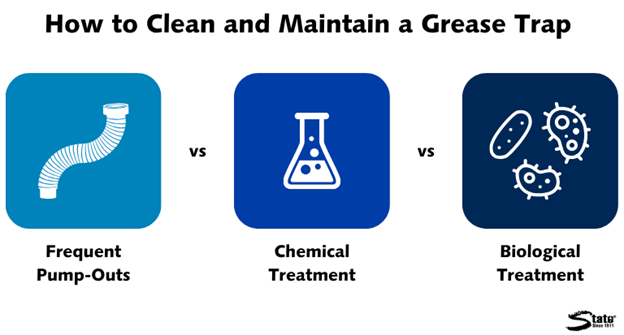
Why Grease Trap Maintenance is Important
The purpose of a grease trap is to collect fats, oils, and grease (FOGs) so that they don’t enter the drain line and cause clogs. Therefore, by function, they deal with a large quantity of smelly, congealed substances.
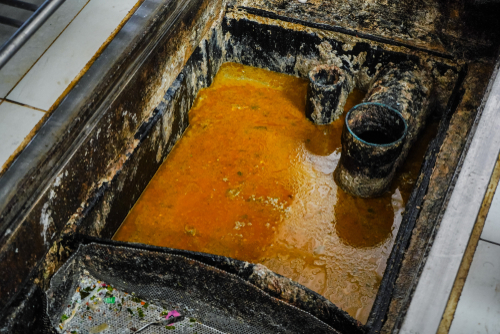
As time goes on, the grease trap collects more FOGs, meaning it gets fuller. After some time, the grease trap will become too full, and the excess must be removed or else it’ll get out in its own way: through the drain pipes. When this occurs, it defeats the purpose of the grease trap in the first place.
You don’t want buildup and clogs in your pipes, and local laws usually require that this excess of FOGs in your grease trap is disposed of too. This is where grease trap maintenance enters the scene to ensure your pipes are healthy and conditions adhere to all necessary regulations.
Frequent Grease Trap Pumping
Regardless of what maintenance option you choose, you will need to pump out your grease trap at least once every three months. This is because other treatment methods can reduce the amount of FOG buildup and slow the accumulation, but it will still eventually reach a point where the grease trap fills up. In addition, many cities require food service facilities to conduct pump-outs at this frequency to protect the wastewater collection system.
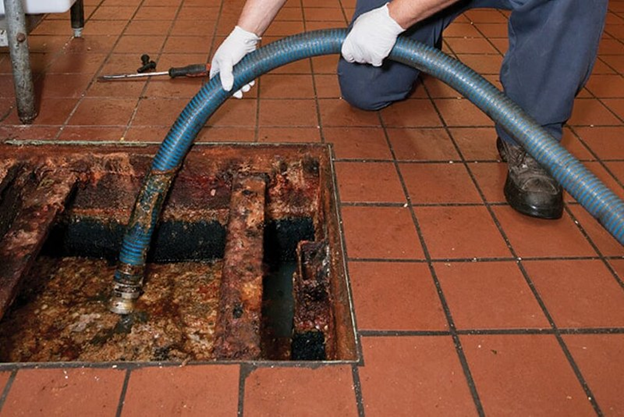
Once a grease trap is 25% full, it’s time to pump out. This will usually occur every one to three months depending on the severity of your FOG influx. For facilities that prefer to solely pump out their grease traps, this will be the only maintenance to keep track of—however, it will likely occur very frequently.
If you have a high-FOG facility, you’ll likely have to pump out about monthly—and it can be even more frequently if your buildup is bad enough. This makes these high-FOG situations the least fitting for relying solely on pump-outs. It’s possible to keep up with high FOG levels via pumping alone, but it will be time-consuming and costly.
Meanwhile, if your facility has low FOG levels, you might be able to pump out once every two to three months. In these situations, solely pumping is usually effective enough on its own—although, other types of maintenance are still an option if desired, especially if there are persistent odors.
Grease Trap Chemical Treatment
If you want to reduce grease trap pump-outs or have a second way of controlling FOGs, you can also use chemical treatment.
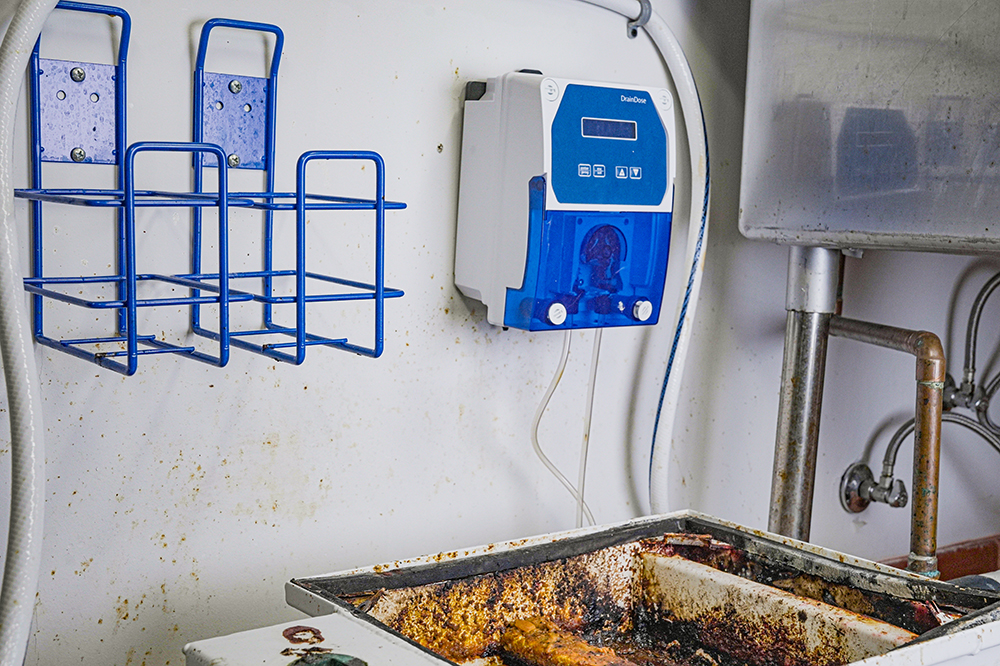
Chemical grease trap treatment usually involves the use of an emulsifying agent. Once released into your grease trap, emulsifiers liquefy FOG buildup.
If you have high FOG levels or otherwise want to reduce grease trap pump-outs, chemical treatment is an effective way to do so. These chemicals will be regularly fed into your grease trap to prevent buildup before it forms. This way, the residue is lessened, and the grease trap can go longer between pump-outs (e.g., a grease trap that gets pumped every month might only need to be pumped every three months with the introduction of chemical maintenance).
The main drawback of chemical grease trap treatment is that emulsifiers are heavily regulated in many municipalities. While they liquefy FOGs to help them pass through the grease trap and pipes, these FOGs have the potential to reform further down the drain line, causing harder-to-reach clogs and possible buildup in the city sewer system.
If emulsifiers are permitted in your municipality and you have high FOG levels, chemical maintenance is a great way to take care of your grease trap. If you have low FOG levels or can’t use emulsifiers, it’s best to explore other options.
Grease Trap Biological Treatment
Your last option to maintain your grease trap is through a biological treatment method.
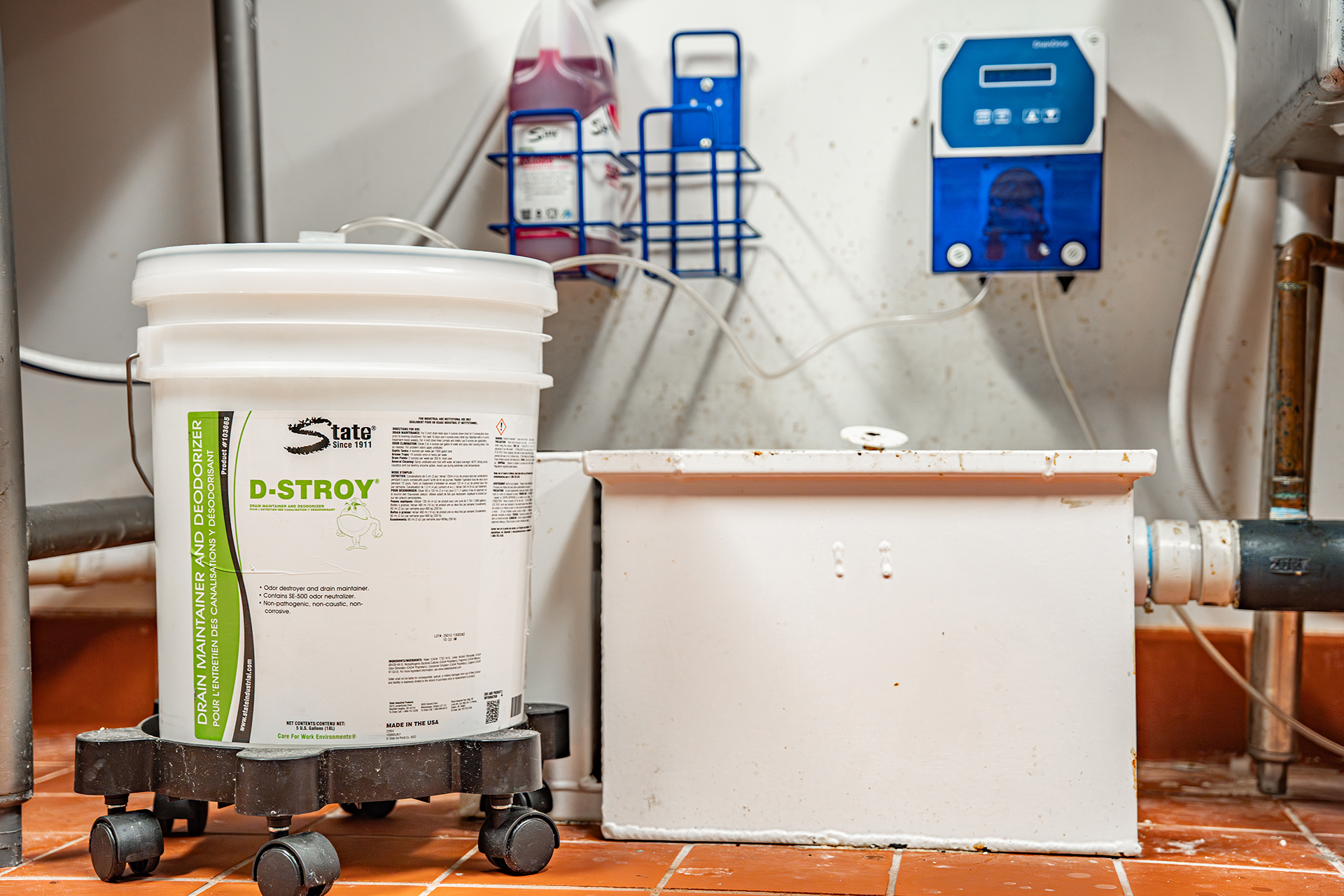
Biological grease trap treatment involves releasing “good” bacteria into your grease trap to break down FOGs. From here, the bacteria subsist on the FOGs in your grease trap, digesting them into water and air. This keeps FOG levels under control, lessening the frequency of pump-outs and keeping things cleaner overall.
This is a good maintenance option for you if you have high FOG levels, want to reduce the frequency of pump-outs, and/or cannot use emulsifiers. If you aren’t bothered by your current frequency of pump-outs, you probably don’t need biologicals, but in other cases, biologicals get to the root of the problem to reduce pump-outs and control buildup.
The downside to biological treatment is that it takes time to start working, but once it’s in action, it's a highly effective long-term solution. Fluctuating pH and temperatures can also adversely affect the biological process.
Learn About the Cost of Grease Trap Pumping vs. Chemical Treatment
There are several different approaches to grease trap maintenance, and it’s not always clear which is the best one to go with. Now that you know which method is right for your facility, watch this video to learn about the cost of frequent grease trap pumping versus chemical or biological treatment.








